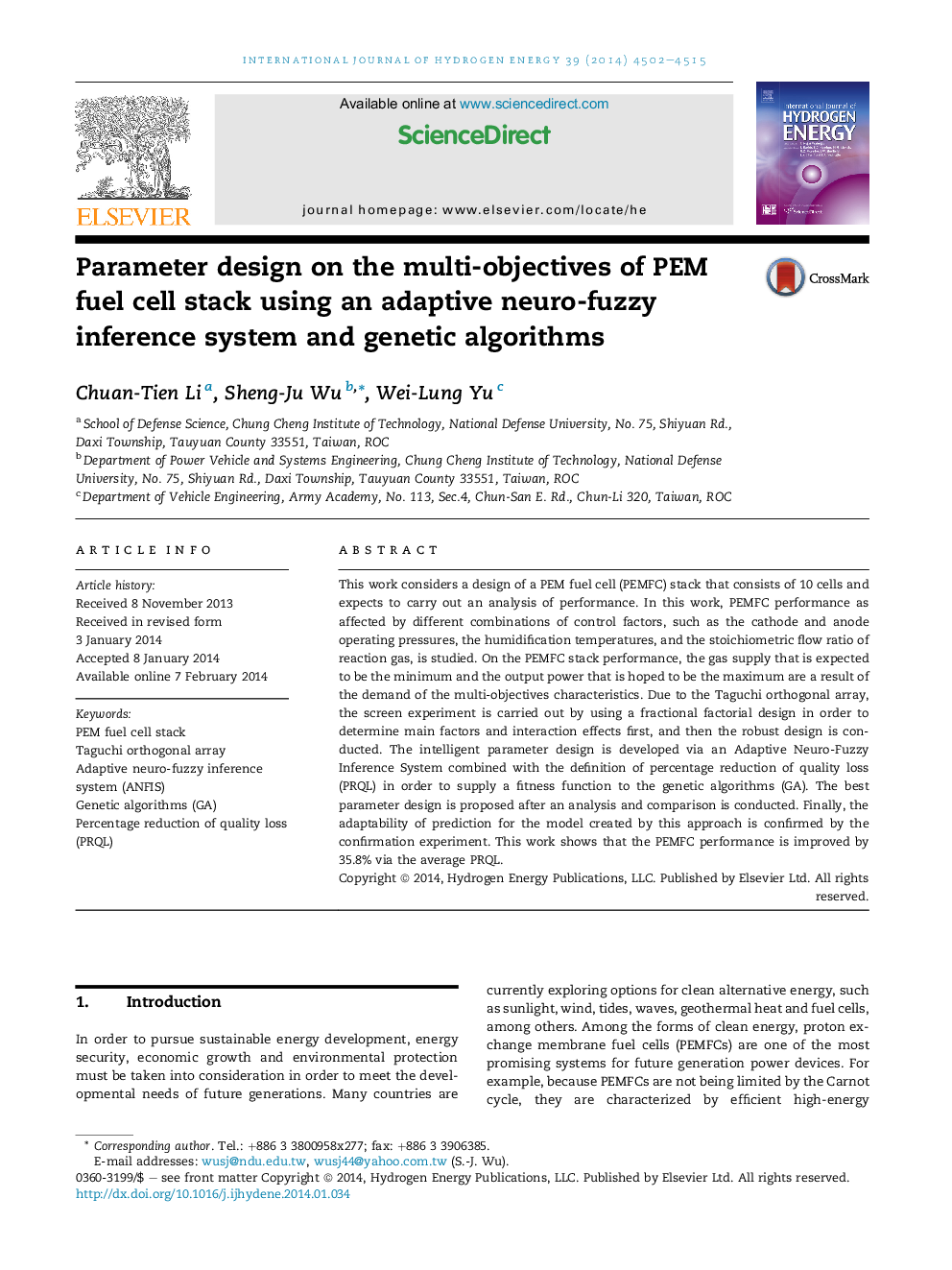| Article ID | Journal | Published Year | Pages | File Type |
|---|---|---|---|---|
| 1270540 | International Journal of Hydrogen Energy | 2014 | 14 Pages |
•Applying Taguchi method and the ANFIS-GA approach obtain the optimal solution.•The average PRQL stands for the demand of the multi-objectives characteristics.•The Taguchi predictive mode can construct the training data for the ANFIS models.•Based on saving fuel consumption, to raise the performance of PEMFCs is accomplished.•The optimal result of multi-objectives is improved by 35.8% via the average PRQL.
This work considers a design of a PEM fuel cell (PEMFC) stack that consists of 10 cells and expects to carry out an analysis of performance. In this work, PEMFC performance as affected by different combinations of control factors, such as the cathode and anode operating pressures, the humidification temperatures, and the stoichiometric flow ratio of reaction gas, is studied. On the PEMFC stack performance, the gas supply that is expected to be the minimum and the output power that is hoped to be the maximum are a result of the demand of the multi-objectives characteristics. Due to the Taguchi orthogonal array, the screen experiment is carried out by using a fractional factorial design in order to determine main factors and interaction effects first, and then the robust design is conducted. The intelligent parameter design is developed via an Adaptive Neuro-Fuzzy Inference System combined with the definition of percentage reduction of quality loss (PRQL) in order to supply a fitness function to the genetic algorithms (GA). The best parameter design is proposed after an analysis and comparison is conducted. Finally, the adaptability of prediction for the model created by this approach is confirmed by the confirmation experiment. This work shows that the PEMFC performance is improved by 35.8% via the average PRQL.
